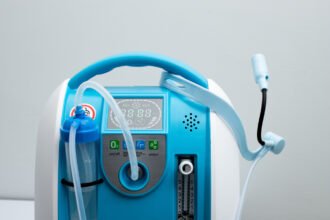 We just returned from the 19th annual American Telemedicine Conference in Baltimore, MD.
We just returned from the 19th annual American Telemedicine Conference in Baltimore, MD.
 We just returned from the 19th annual American Telemedicine Conference in Baltimore, MD. It was an amazing opportunity to network, meet telemedicine pioneers, and get energized about the opportunities to improve patient care. While there are still some major barriers to care, first in the way of billing codes and second in the way of cross-state licensing, speakers were confident that these legislative issues will be solved for a number of reasons: telemedicine is effective, it’s what patients want, and it can improve access to care and decrease costs.
We just returned from the 19th annual American Telemedicine Conference in Baltimore, MD. It was an amazing opportunity to network, meet telemedicine pioneers, and get energized about the opportunities to improve patient care. While there are still some major barriers to care, first in the way of billing codes and second in the way of cross-state licensing, speakers were confident that these legislative issues will be solved for a number of reasons: telemedicine is effective, it’s what patients want, and it can improve access to care and decrease costs.
Telehealth in Practice: Chronic Disease Management
Similar to what we’re seeing in all healthcare, a one-size fits all approach does not work when it comes to telehealth either. For some patients it works extremely well, and for some even the most rudimentary telehealth (i.e. phone calls) doesn’t work. We heard many discussions about green, yellow, and red patients. Green are those that are able to take care of themselves and their recovery. Yellow are those that have some risk, particularly of hospital readmissions. Red are those who are a definite readmissions risk. While Red patients often cost the most money, they may not be the best candidates for the cost savings of telehealth. One speaker pointed out that the most challenging of “red” patients often move without notice or have their phones cut off which makes even the simplest intervention, either a phone call or a house call impossible. This speaker suggested that while the healthcare system needs to figure out a solution for these patients, they are often used as examples of why telemedicine doesn’t work. Using this as the standard will definitely set us up for failure as the benefits for those green and yellow patients are real.
Congestive Heart Failure is the number 1 reason for hospital readmissions, and not-surprisingly a number of sessions dealt with follow-up care for this population. As well, repeated CHF readmissions also lead to long-term mortality. In practice ensuring follow-up visits reduced readmissions, however, in-person follow up visits are both expensive and inconvenient for patients. Carolinas Healthcare Systems started a telehealth follow-up program for CHF in June of last year, and are already seeing results for their Heart Success Virtual Clinic. First, patients have been saved over 3,900 miles and 380 hours of travel. Second, the follow-up rate for virtual visits is >95% compared to 70% at the in-person clinic, and the no-show rate is 3% compared to 10%. Telehealth visits are more convenient and as one speaker pointed out “it’s hard to miss a visit that’s in your house” so no-shows decreased as well. While the study hasn’t been completed yet, they are expecting a 50% decrease in readmissions for the patients that are participating in telehealth visits.
The University of Arkansas Center for Distance Health also saw positive results for CHF by using a call center to manage 30-day post-discharge follow-up coupled with an EMR. While on the phone with the patient, an RN verifies whether the patient has been seen by a nutritionist, is on a special diet, is managing fluid intake, has been in touch with a patient educator, and has scheduled a 1-week follow up appointment. Patients were instructed to call the hotline with any questions, concerns, or worsening symptoms. During the pilot from May-July of 2013 the program saw a 31% decline in readmissions resulting in $60,000 in cost savings to the organization (this did not include the costs of any Medicare fines). When the program was rolled-out to the entire patient population in Q1 of 2014, 34 readmissions were prevented with a total cost savings of $418,000.
Other examples from the conference involved care team and peer support for patients. A bariatric program run by DPS Health included patient discussion groups that were moderated by healthcare professionals. Moderators were present to guide the discussion and ensure that patient questions were answered, but they did this by prompting patients to answer each other’s questions rather than having the moderator jump in. This peer support helped participants achieve an average weight loss of 4-5%.
Sensors and Information Overload
It seems that the greatest promise for telemedicine though comes at the convergence of patient self-care, collaborative team care, and access to information, and patient provider communication. Patients can take more responsibility for their care outside the clinic using monitoring, apps, and sensors. However, the best results were seen when those patients were able to communicate remotely with healthcare professionals, and when those healthcare professionals also had access to information. However, none of this should come at the expense of care. While sensors were a hot topic, tools must be developed to help healthcare professionals deal with the influx of data. They need to be able to triage the information and get to the relevant and actionable information. One physician said that we don’t have a primary care physician shortage, but due to the extraordinary demands of documentation, we do have a shortage of physician time. Trackers and sensors should not increase this burden if they want to have an impact on care.
At the conference we saw sensors for just about everything, including a few questionable brain scanners. The sizes of scanners ranged from ankle bracelets to band-aids, and from flashy consumer designs to highly clinical. One speaker was adamant that disposable sensors are the future, citing the “razor/razor blade” model. While disposable are appealing in that they are usually designed to be worn under clothes and are small, we’re not sure about the analogy as the software that comes with sensors is usually free. However, given the number of FitBits we’ve had to replace at Wellpepper due to loss, the idea of a cheap disposable sensor is highly appealing.
What Patients Want
We’ve know since we founded Wellpepper that patients want information, convenience, and access to support from healthcare providers everywhere. It was heartening to see this echoed throughout the conference. Perhaps the most interesting was the data presented by Carena on what happened when a major employer in Seattle moved to a high deductible plan: the total number of PCP visits decreased 52% and the remaining shifted to telehealth. If this doesn’t prove without a doubt that patients are cost-conscious consumers, we’re not sure what does, especially since we happen to know that major employer pays pretty well. It also probably shows that if services are unlimited, people will overuse them.
This was really just a small glimpse of an extremely busy conference. On the one hand, it’s heartening to see all the passion about change, however, it’s also sobering to realize that this was the 19th year for this conference, and yet we still are debating the merits of telehealth, and some states do not allow telehealth. Hopefully though between patient demand, increased access to technology, and the need to reevaluate both the costs of care and how to support population health, this will change.
We will definitely see you next year at ATA 2015, and are looking forward to see how small the sensors have become and how much more ubiquitous telemedicine has become.






